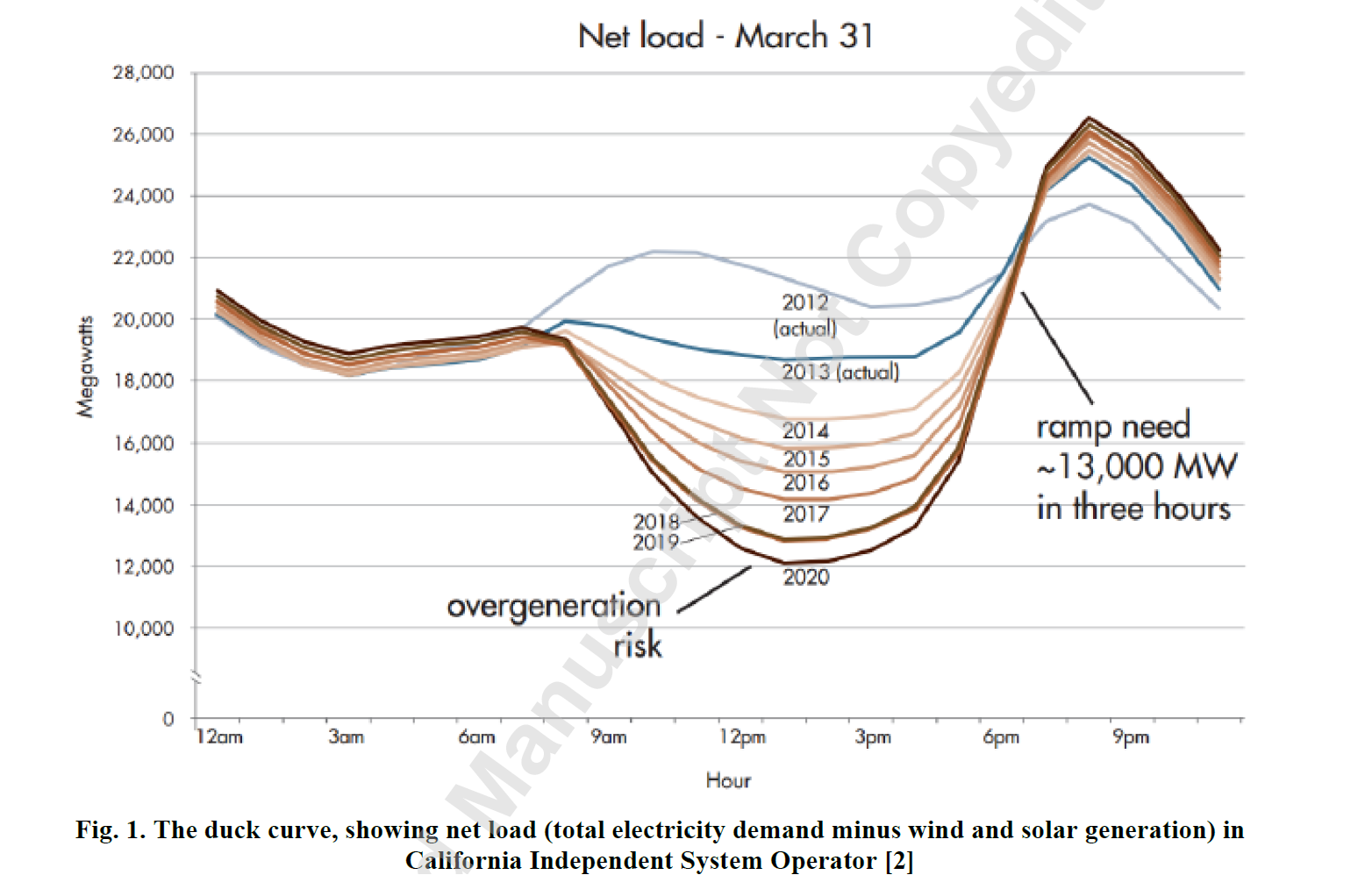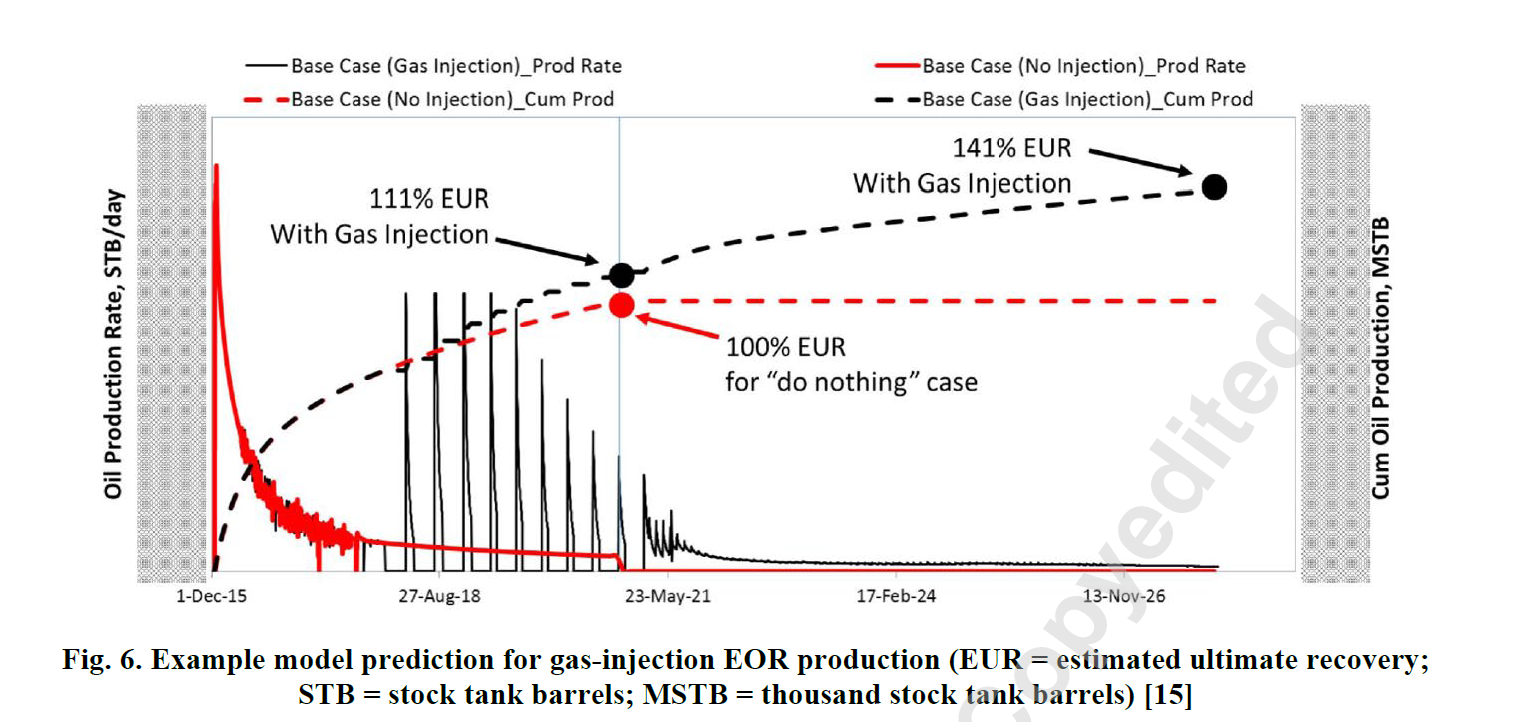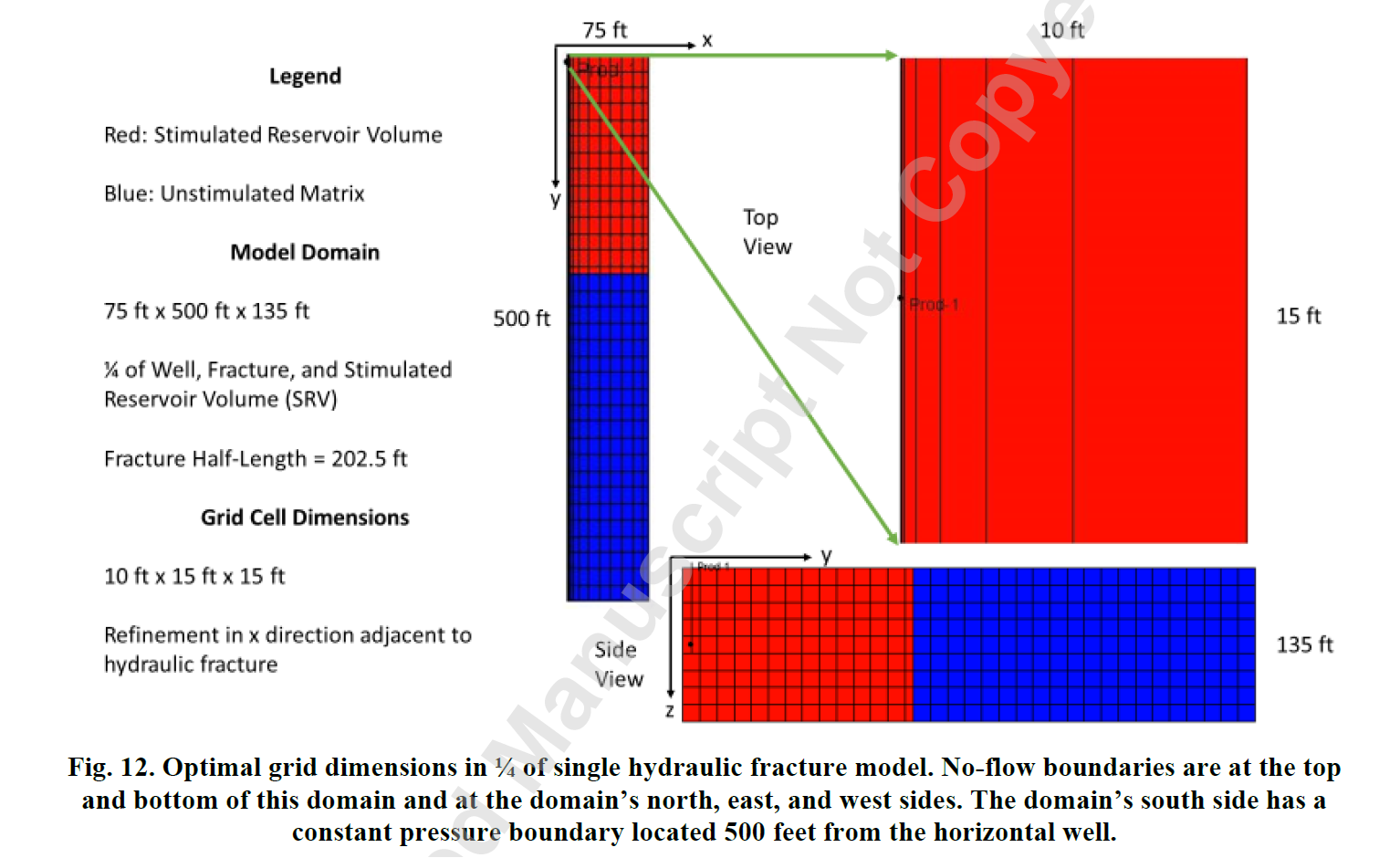Evaluation of Energy Storage Potential of Unconventional Shale Reservoirs Using Numerical Simulation of Cyclic Gas Injection
压缩空气储能(CAES)将能量以压缩空气的形式储存在地下构造中,通常是盐穴洞穴。当电力需求增长时,通过涡轮机释放压缩空气以产生电力。由于开发地下储库的固有风险和不确定性,美国的CAES目前只有一个建于1991年的电厂。作为CAES的替代方案,我们提议利用数十万个水力压裂水平井将能量储存在非常规页岩储层中,以压缩天然气的形式。为了储能,通过多余电力将产出的天然气重新注入储层,然后通过膨胀机产生电力进行生产。
为了评估这一概念,我们使用CMG-GEM商业模拟软件对非常规页岩储层进行了循环注气数值模拟。我们通过建立非常规页岩储层中单个裂缝段的概念模型来表征循环注气和生产过程中的储层行为。接下来,我们使用已发布的数据对Marcellus页岩气田进行循环注气模拟。结果表明,Marcellus非常规页岩储层可以支持每口井100-1,000 kW的短期和长期储能。结果表明,在非常规页岩气井中进行储能存可能是可行的,并值得进一步研究。
ABSTRACT
Compressed-air energy storage (CAES) stores energy as compressed air in underground formations, typically salt dome caverns. When electricity demand grows, the compressed air is released through a turbine to produce electricity. CAES in the United States is limited to one plant built in 1991, due in part to the inherent risk and uncertainty of developing subsurface storage reservoirs. As an alternative to CAES, we propose using some of the hundreds of thousands of hydraulically fractured horizontal wells to store energy as compressed natural gas in unconventional shale reservoirs. To store energy, produced or “sales” natural gas is injected back into the formation using excess electricity and is later produced through an expander to generate electricity. To evaluate this concept, we performed numerical simulations of cyclic natural gas injection into unconventional shale reservoirs using CMG-GEM commercial reservoir modeling software. We tested short-term (diurnal) and long-term (seasonal) energy storage potential by modeling well injection and production gas flow rates as a function of bottom-hole pressure. First, we developed a conceptual model of a single fracture stage in an unconventional shale reservoir to characterize reservoir behavior during cyclic injection and production. Next, we modeled cyclic injection in the Marcellus shale gas play using published data. Results indicate that Marcellus unconventional shale reservoirs could support both short- and long-term energy storage at capacities of 100-1,000 kWe per well. The results indicate that energy storage in unconventional shale gas wells may be feasible and warrants further investigation.





